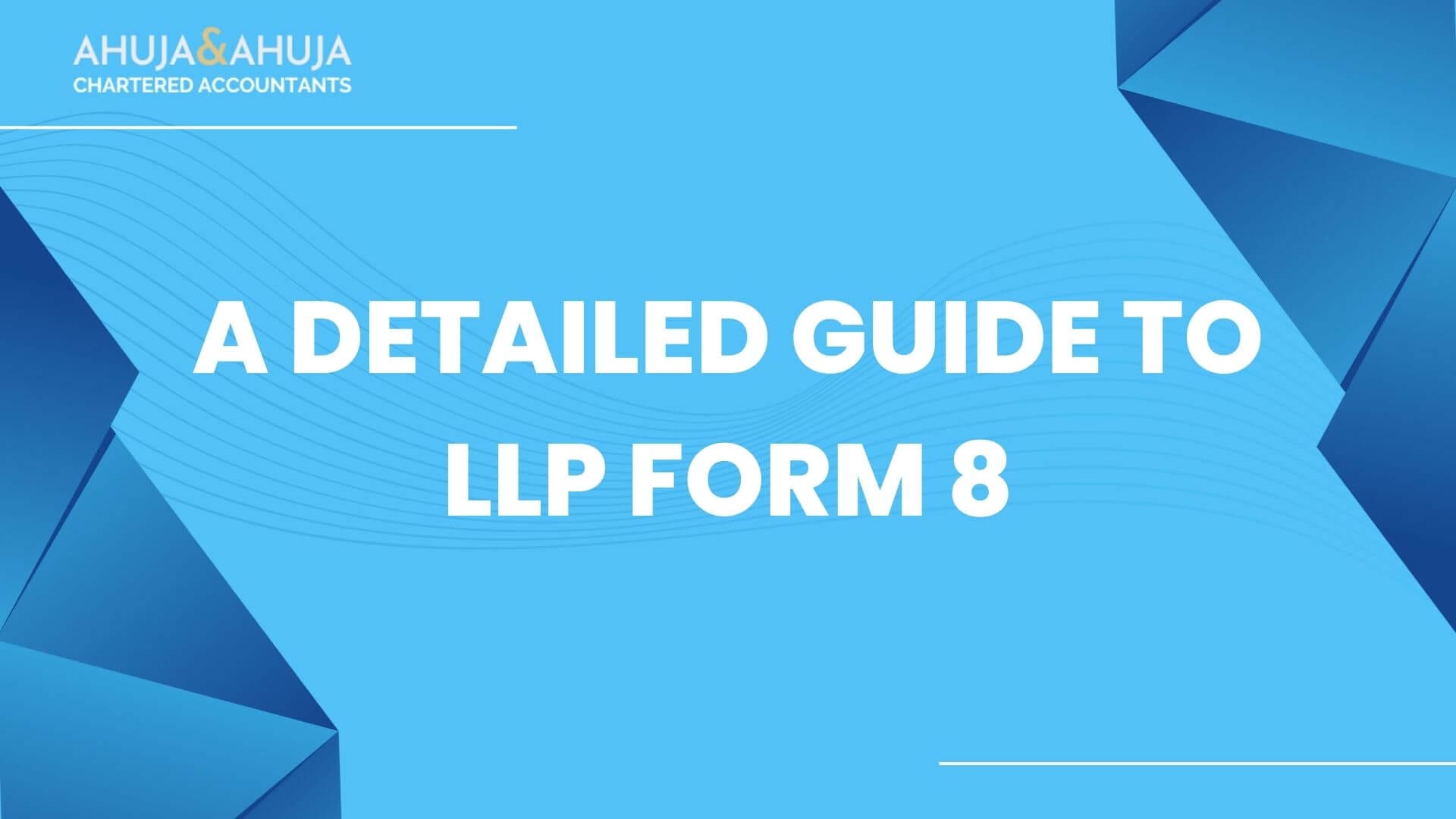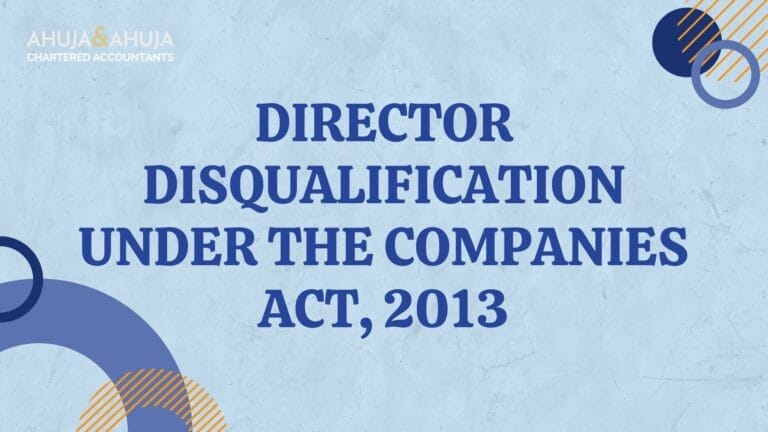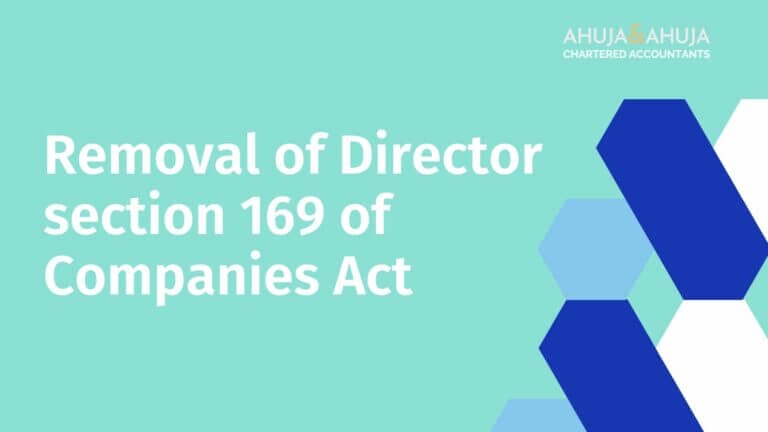A Detailed Guide to LLP Form 8 – Statement of Account & Solvency: Due Date, How to file, Fees etc.
Introduction to LLP Form 8 – Statement of Account & Solvency
In the vibrant and dynamic business landscape of India, Limited Liability Partnerships (LLPs) represent a popular organizational structure, offering the flexibility of a partnership and the advantages of limited liability for its partners.
This hybrid structure necessitates a rigorous compliance regime to ensure financial transparency and legal accountability.
Among the essential annual filings for LLPs, LLP Form 8, or the Statement of Account & Solvency, stands out as a crucial document.
This guide intends to navigate you through every facet of LLP Form 8, ensuring your LLP can meet its compliance obligations effortlessly and efficiently.
Significance of Form 8 for LLPs
LLP Form 8 isn’t just a regulatory requirement; it is a reflection of an LLP’s fiscal health, providing a clear picture of its financial standing including assets, liabilities, and its solvency status.
This form ensures that all stakeholders, including creditors, partners, and regulatory bodies, have accurate and current financial information, crucial for decision-making and operational transparency.
The filing of the Statement of Account & Solvency is mandatory for all LLPs registered in India, regardless of their size or turnover.
This obligation reinforces the principle of transparency and accountability within the corporate environment, promoting trust and stability in the economic system.
LLP registration is the first step in entering into the corporate domain governed by the MCA (Ministry of Corporate Affairs), and adhering to the compliance requirements, including the timely submission of LLP Form 8, is the continuum of maintaining that status.
Overview of LLP Form 8 Compliance
Every LLP needs to submit this form annually to the Registrar of LLPs. It primarily includes a declaration of solvency and a detailed account of the LLP’s financial activities for the year.
Here are the two major filings related to LLP Form 8 due annually:
- LLP Form 8: Must be filed by October 30th every year, detailing the financial status as of March 31st of the same year.
- LLP Form 11 (Annual Return): Needs to be filed by May 30th every year, providing general details about the LLP’s partners and their contributions.
Failure to file Form 8 can attract significant penalties and may also adversely affect the creditworthiness of the LLP.
It is thus paramount for LLPs to adhere to the scheduled timelines to avoid complications related to late filings, ensuring they remain in good standing both legally and commercially.
Through the following sections of this article, we will delve deeper into the specifics of LLP Form 8, exploring its components, filing processes, fee structures, and much more to equip you with all the necessary information.
Whether you are starting a new LLP or are part of an existing one, understanding and managing this aspect of LLP compliance will be crucial.
Understanding LLP Form 8: Components and Compliance
LLP Form 8 is not merely a document but a comprehensive disclosure that paints a picture of an LLP’s financial health. To fully grasp the intricacies of this form, it’s essential to understand its two main components:
Part A – Statement of Solvency
In this section, the LLP affirms its financial health by declaring its solvency. It is a declaration by the designated partners that the LLP is capable of meeting its financial obligations as they become due.
This assertion is backed by detailed insights into the assets and liabilities of the LLP as of the 31st of March of the financial year:
- Assets: This includes all the tangible and intangible resources owned by the LLP.
- Liabilities: This encompasses all debts and obligations owed by the LLP.
A truthful declaration of solvency in Part A is crucial as it ensures that the LLP’s financial practices are sound and that it can continue operations without financial hindrances.
Part B – Statement of Accounts, Statement of Income, and Expenditure
Part B is more detailed and requires the LLP to provide comprehensive financial statements. This part includes:
- Balance Sheet: A snapshot of the LLP’s financial situation, showing assets, liabilities, and partners’ equity as of the end of the financial year.
- Profit and Loss Statement: This reflects the financial performance of the LLP during the financial year, outlining the revenues earned and expenses incurred.
- Statement of Cash Flows: Though not mandatory, providing a cash flow statement can offer further insights into the liquidity position of the LLP.
These financial statements provide a clear view of the economic activities of the LLP and are essential for stakeholders for informed decision-making.
Filing Requirements and Procedure
Filing LLP Form 8 is a process that must be handled with accuracy and timeliness:
1. Collect Required Information
Before proceeding with filing, ensure all necessary information is gathered, including the LLP’s financial statements, solvency details, and any other required forms or disclosures.
2. Prepare the Form
Accurately fill in the details in both Part A and Part B of LLP Form 8. Utilize professional accounting services if the complexity of the financial details demands expert handling.
Firms like Ahuja & Ahuja Chartered Accountants can provide invaluable assistance in ensuring that your filings are compliant and accurate.
3. File Online
LLP Form 8 needs to be filed electronically through the MCA portal. Digital signatures of designated partners are required to authenticate the filing.
4. Pay Required Fees
Base the filing fee on the total obligation of contribution by the partners in the LLP. Fees increase if the form is filed past the due date, as outlined in the LLP annual return filing services.
Importance of Timely Filing
Failing to file on time can lead to significant penalties and may put the LLP’s compliance status at risk.
Late filings not only incur financial costs but might also impact the LLP’s reputation, affecting trust among stakeholders and potential business opportunities.
Thus, adhering to the filing deadline of October 30th each year is imperative for maintaining healthy corporate compliance.
Fee Structure for Filing LLP Form 8
Understanding the fee structure for filing LLP Form 8 is crucial for budgeting and financial planning for LLPs. Here’s a breakdown of the fees based on the total contribution of partners:
| Contribution Levels | Normal Filing Fees |
|---|---|
| Up to Rs.1,00,000 | Rs.50 |
| Rs. 1,00,001 to Rs. 5,00,000 | Rs. 100 |
| Rs. 5,00,001 to Rs. 10,00,000 | Rs. 150 |
| Rs. 10,00,001 to Rs. 25,00,000 | Rs. 200 |
| Rs. 25,00,001 to Rs. 1,00,00,000 | Rs. 400 |
| More than Rs. 1,00,00,000 | Rs. 600 |
Additional Fees for Late Filing:
If LLP Form 8 is filed after the due date, additional fees are applicable which are significantly higher than the normal fees. Here are the charges based on the delay period:
For Small LLPs:
| Delay Period (in Days) | Multiple of Normal Filing Fees |
|---|---|
| Up to 15 | 1x |
| 16 to 30 | 2x |
| 31 to 60 | 4x |
| 61 to 90 | 6x |
| 91 to 180 | 10x |
| 181 to 360 | 15x |
| Beyond 360 | 15x plus Rs. 10 per day |
For Other than Small LLPs:
| Delay Period (in Days) | Multiple of Normal Filing Fees |
|---|---|
| Up to 15 | 1x |
| 16 to 30 | 4x |
| 31 to 60 | 8x |
| 61 to 90 | 12x |
| 91 to 180 | 20x |
| 181 to 360 | 30x |
| Beyond 360 | 30x plus Rs. 20 per day |
It’s advisable to ensure timely filing to avoid these steep penalties. For detailed guidance and professional help with filing, LLPs can consult services that specialize in LLP closure and compliance to ensure accuracy and adherence to regulations.
Frequently Asked Questions about LLP Form 8
Who must file LLP Form 8?
All registered LLPs in India must file LLP Form 8 annually, irrespective of their business turnover or contribution amounts.
What happens if I miss the filing deadline for Form 8?
Missing the deadline can lead to monetary penalties and may also affect the LLP’s legal standing. It’s essential to adhere to the due date of October 30th each year.
Is there any provision for condonation of delay in filing LLP Form 8?
The MCA occasionally introduces condonation schemes allowing LLPs to file overdue returns with reduced penalties. Keep an eye on announcements from MCA schemes for such opportunities.
Can digital signatures be used for filing Form 8?
Yes, LLP Form 8 must be digitally signed by designated partners before submission. Digital signatures are a mandatory requirement for the authentication of e-filings with the MCA.
Where can I get professional assistance for filing LLP Form 8?
Professional assistance can be sought from chartered accountants and legal firms that specialize in corporate law and LLP compliance, such as Ahuja & Ahuja Chartered Accountants in Gurgaon.
Conclusion
Filing LLP Form 8 – Statement of Account & Solvency is a critical legal obligation for all LLPs in India. It ensures financial transparency and compliance with Indian corporate laws.
Proper attention to the details of this filing, including meeting the due dates and understanding the fee structure, not only helps in avoiding penalties but also boosts the credibility and integrity of the LLP.
Regular consulting with knowledgeable professionals can significantly ease the compliance burden, allowing LLPs to focus more on their core business activities.
Disclaimer
The materials provided herein are solely for educational and informational purposes. No attorney/professional-client relationship is created when you access or use the site or the materials. The information presented on this site does not constitute legal or professional advice and should not be relied upon for such purposes or used as a substitute for professional or legal advice.







